Interview
South Writ Large asked historian Sarah McNamara and artist Michelle Sawyer to discuss their recent collaborative project creating a historic mural for their community in Ybor City, Florida.
- Day 1 Mural Design Projection
- Day 2 Mural Outline
- Day 2 Michelle on Lift for Mural Work
- Day 3 Mural
- Day 4 Mural
- Day 5 Mural
- Day 6 Mural
- Day 7 Mural
- Day 8 Mural
- Completed Mural
- Sarah & Michelle, Mural & Marker
- Mural & Marker, 7th Avenue
What inspired the collaboration behind this mural?
Sarah: Ybor City is a place with a rich Latinx history. When someone walks through the neighborhood, which is now a historic district, you see historical markers that recognize every part of the community’s past except its political tradition and the role of Latinas as political actors within the community. My goal with this collaboration was to create a modern landmark that represented and recognized the history of Ybor City as it was.
The 1937 Antifascist Women’s March was the perfect historical event to pilot such an effort. Not only is the event historically significant but it reflects the radical, leftist, international politics that defined Ybor City—a history that is important but rarely memorialized.
As I developed this project, I did so consciously. I wanted the artist who joined the effort to be of and from Ybor City. Michelle is a Cuban American artist who lives in Ybor today. In a way, Michelle and I represent Ybor City’s past and its present. I am an historian whose family histories and connection to Ybor inspire my scholarly and public history work, while Michelle is part of a new generation of artists who honor the community’s history as they redefine Ybor as a haven for creativity and reinvention. The mural that emerged from our collaboration is at once a site of remembrance, education, and public appreciation.
Michelle: I joined this project because I was inspired by the women it celebrates and by the story it tells.
People often imagine that murals emerge from sheer inspiration—one person has an idea, they find the perfect artist, and together the two people work toward a shared vision. There is an element of truth to this but the reality is much more complicated.
Creating a mural that emerges from historical scholarship requires navigating historical commission approval boards, gaining support from city agencies, and, in this case, navigating state and national historic district protocols. There is also the difficult side of getting funding, permissions, and permits as well as presenting proposals to various boards. Sarah did all that work and found ways to collaborate with community members who could help us along the way.
To do a project like this, an artist has to work outside of painting and drawing. You do not get to sit in a peaceful creative bubble. It’s not like you see a wall and think a mural would be beautiful on it. In many ways, this process is more like a collaborative research project with a creative outcome.
Could you tell us more about the history of the women in the mural and their connection to Ybor City?
Sarah: In case readers are unfamiliar, Ybor City is one of the first, sustained Latinx communities in Florida. It is located on the eastern outskirts of Tampa within Hillsborough County and was home to the U.S.-based Cuban cigar industry between the 1880s and 1960s. To this day, locals refer to Ybor as “the Cigar City.” The majority of those who immigrated to Ybor were working class and politically left. While most people who lived in Ybor were Cubans, others were Spaniards and Italians. Together these immigrants created a community that was the center of manufacturing power in the state of Florida and the southern center of leftist, internationalist politics.
With this context in mind, it is less surprising that an ode to antifascism belongs in Ybor City.
The mural tells the story of the Antifascist Women’s March, which happened on May 6, 1937. On this day more than 5,000 women marched from Ybor City to the front steps of City Hall to protest the rise of fascism in Spain and the United States’ refusal to condemn it. This event was among the largest collective actions of Latinas led by Latinas in the U.S. before the early 2000s movement for immigration reform. The sheer scale illustrates the vast support of the antifascist movement within Ybor as well as the importance of antifascist principles to the community. While the Spanish Civil War was the galvanizing force that attracted people to the movement, those in Ybor understood their experiences with nativist violence, anti-labor vigilantism, and ethnic exclusion by Anglo city leaders and powerholders as fascist. This sentiment was so strong that by the 1940s many in Ybor continued to associate themselves with the Popular Front as they wrote and spoke about WWII as an extension of the antifascist cause of the 1930s.
Now, when it comes to the women and images on the mural, those choices were made by Michelle. Who she chose to highlight and the way she did it truly surprised me.
Michelle: The women in the mural represent the three elements that made this movement possible: the international, the national, and the local. I’ll explain them in order.
The woman at the top left is Dolores Ibárruri. She was a Spanish antifascist who gave passionate speeches that encouraged support and defense of the Spanish Republic against Franco’s fascist forces. Ibárruri became internationally known for her rhetoric and her use of the battle cry, “¡No Pasarán!” In Ybor City, the newspaper La Gaceta frequently printed and reflected on her speeches as it worked to garner support among the community for the antifascist cause. Ibárruri’s work earned her the nickname “la pasionaria” (the passion flower). The red flowers on the mural are additional nods to her.
The woman on the left in the middle is Luisa Moreno—born Blanca Rosa López Rodríguez—who was a Guatemalan feminist, antifascist, civil rights advocate, and labor organizer. Between 1935 and 1937, Moreno worked in Ybor City as a labor organizer for the Cigar Maker’s International Union (CMIU) and became active in the antifascist movement. Moreno was one of the organizers and leaders of the 1937 Antifascist Women’s March. Following this event, Moreno left Florida and became a founding member of UCAPAWA—the most diverse and ambitious labor union in the United States that blended civil rights and labor rights. Moreno is famous for her work organizing and advocating for Latina and immigrant workers elsewhere in the U.S. but her work in Florida is lesser known. She is on the mural both to recognize her work as an organizer and as a reminder of how Latina activists learned tactics from each other. In Sarah’s book, she credits the women of Ybor City as teaching Moreno about the importance of blending politics and unionism to invoke great change.
When Sarah said she was surprised by the women I chose to put on the mural, it was the third woman who shocked her.
The woman on the bottom left is Margot Falcón Blanco who Sarah refers to as her “Aunt Margot.” Falcón was Sarah’s great aunt whom she knew growing up. Falcón was born in Ybor City and like most people from Ybor she was of mixed parentage—her mother was from Cuba and her father was from Spain. Throughout Falcón’s life she worked in the Ybor cigar industry. On the day of the 1937 Antifascist Women’s March, Falcón marched with her mother, Amelia Blanco Alvarez. I loved the family connection to this story—not just because it is personal to Sarah but because Falcón was likely one of many women who marched alongside family members and close friends. Movements that create great change—both within communities and beyond—require active support from all. When I read the history Sarah wrote about this movement they really were like a family.
Falcón stands for the many local faces we may not know. The image of the women in the background, the marchers, is inspired by a photograph taken at the march on the day of the event.
Michelle, what techniques did you use to make this mural?
Michelle: This was the creative part. Sarah did all the research, wrote the book, and knew this story. As part of my creative and technical process, I had to filter through all of her work and figure out how to present it. I had a sketch book, three pages of notes, and then I diagrammed what worked. It’s hard, but it’s fun.
As I read about the Antifascist March and thought about this history, I felt like the mural needed to be personal. Most artwork that commemorates women’s history recasts women as beautiful, delicate, and even hypersexual or uses shapes, silhouettes, or vague outlines. I didn’t want to give people vague womanhood. I wanted this mural to represent strength, grit, determination, and to celebrate the working-class history that made Ybor City what it was and the working-class history that made these women who they were. So, I created a design with faces and with women starring straight at you. There’s a bunch of bad-asses on that wall.
To create a mural, I begin with a rough sketch in my sketch book and then move to a full digital mock up. When it is time to paint the mural, I project the image onto the wall, outline it, and then paint it. It’s interesting to see the digital image come to life in the real world.
Where is the mural located and how do you think people will respond to it?
Sarah: The mural is located at 2015 E. Seventh Avenue, Tampa, Florida 33605.
Seventh Avenue is the main street that runs through Ybor City and the street where the march began. Honestly, I see it as a small miracle that we managed to get approval to move forward on the project. Space is at a premium on Seventh Avenue and city agencies are protective about changes to anything on this street. This was not a simple process but the good news is that it was worth it.
Reception from the community has been overwhelmingly positive. On the week of the debut more than 200 people came to the two events that celebrated the unveiling and dedication of the historical marker and mural. I have received emails thanking me for the project and Michelle and I have spoken to more journalists than either us anticipated. The project has inspired a local documentarian who wants to collaborate on a short film that tells this story. There will also be a long-form documentary podcast to emerge from the project—another collaboration that emerged from local support.
Michelle: I actually got a text today of a friend of mine who saw a segment on Fox 13 profiling the mural and talking about public art throughout the Tampa Bay area. Everyone I knew was excited about it. I had a friend from Tarpon Springs who came out here to see it and community support has been amazing. I hope people continue to interact with the project and ask questions. On May 6, Sarah and I did a tour of Ybor City to celebrate the anniversary of the event. I hope we can make this an annual thing so we celebrate these women but also the reason they organized.
What message do you hope the mural will send?
Michelle: On the day of the dedication I said, “A lot of times as an artist, I see women portrayed as an ideal—people who are pretty but not as symbols of strength. It gets old.” I liked that this project gave me the opportunity to portray women as strong with nothing inherently glamorous about them. The women on the mural are working-class activists, laborers, workers, and community members. They feel real and I hope that this mural provokes interest and expands our vision of womanhood and latinidad.
This mural was perfect placement and timing—mainly because of what was happening, and is happening, in Florida politics right now. The mural unveiled just as things were getting really heavy and acted as a reminder that if we collectively have the courage and determination to just say no, we can stop the escalation of restriction, fascism again.
Sarah: The timing was perfect but it was not intentional. I pitched this project to Jennifer Dietz of the Hillsborough County Historical Commission over two years ago and the process of finalizing the project took about a year. Just before the unveiling, I found myself laughing with Michelle. This project was not as controversial when we started but it certainly was by the time we finished. A part of me was surprised that the project unveiled without any protest. In fact, we experienced the complete opposite.
Public history, and especially community projects, have the tendency to sanitize the past. This project does the opposite. Just as Michelle has loved having the opportunity to portray real women as real women, I have enjoyed sharing Ybor City’s political culture as it was. I hope this project shows other scholars that it is possible to translate complex, scholarly work to broad audiences through exciting public projects. At times, work like this is seen as less intellectual but I argue that our public-facing and community-engaged work is among the most important labor we do. Sharing research beyond academia has the ability to remind people of what once was and to ask them to question what is.
I hope this mural speaks to multiple audiences and I hope it has a national reach. The mural is a window into a lesser-known history of Cuban Americans that complicates national stereotypes of who Cubans are. Likewise, it shows the strength of Latina activists and illustrates that great power has long lived in immigrant communities throughout the region. Finally, I hope the mural acts as a reminder to all who visit Ybor City what this place once was.
Sarah, could you tell us about your new book more broadly beyond the stories told in the mural?
Sarah: My book, Ybor City: Crucible of the Latina South, is the history of three generations of migrant, immigrant, and U.S.-born Latinxs—from Cuba, the Caribbean, and the Americas—who collided in Tampa, Florida, between the late nineteenth and the mid-twentieth centuries. Latinas stand at the center of the story as I examine Latinas who organized strikes, marched against fascism, and criticized U.S. foreign policy. The Antifascist March takes center stage in chapter 2. While many members of the immigrant generation maintained their dedication to progressive ideals for years to come, those who came of age in the wake of World War II distanced themselves from leftist radical politics amid the Red Scare and the wrecking ball of urban renewal, later becoming the foundation of the modern Democratic Party in Tampa. Ybor City shows how Latinxs shaped Florida and how people, places, and politics become who and what they are.
What projects do each of you have coming up next?
Sarah: I have started working on my next book project, which will examine the history of the Latinx vote in Florida, but I also hope to think about how to expand the mural project. I’d love to work with Michelle again. We plan to submit an NEA grant in the spring of 2024 to make this a larger-scale effort.
Michelle: Right now, I’m focusing on art events. I’m working with the Skatepark of Tampa to commemorate their thirtieth anniversary and showcasing work at the Bricks in Ybor City. Sarah and I are scheming . . .


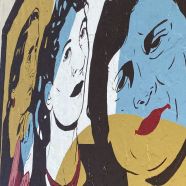





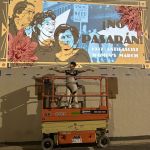
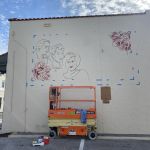
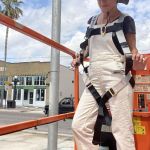
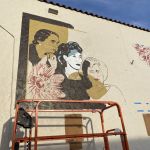
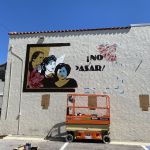
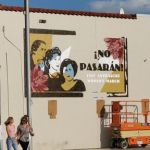
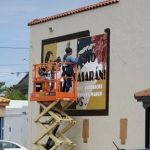
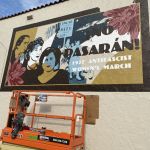
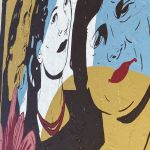
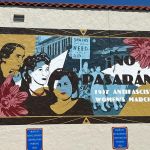
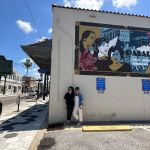
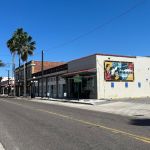
0 Comments
Trackbacks/Pingbacks